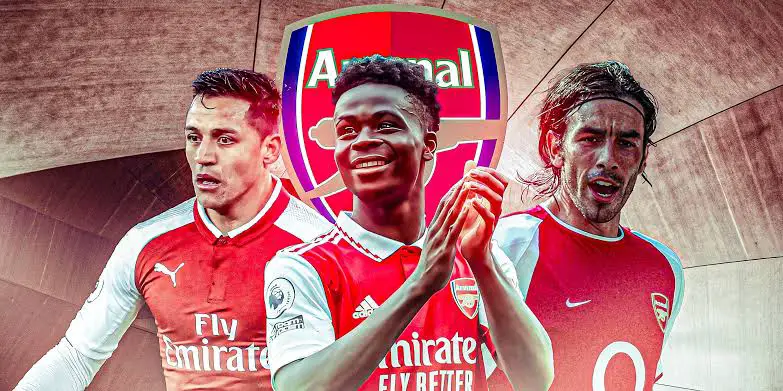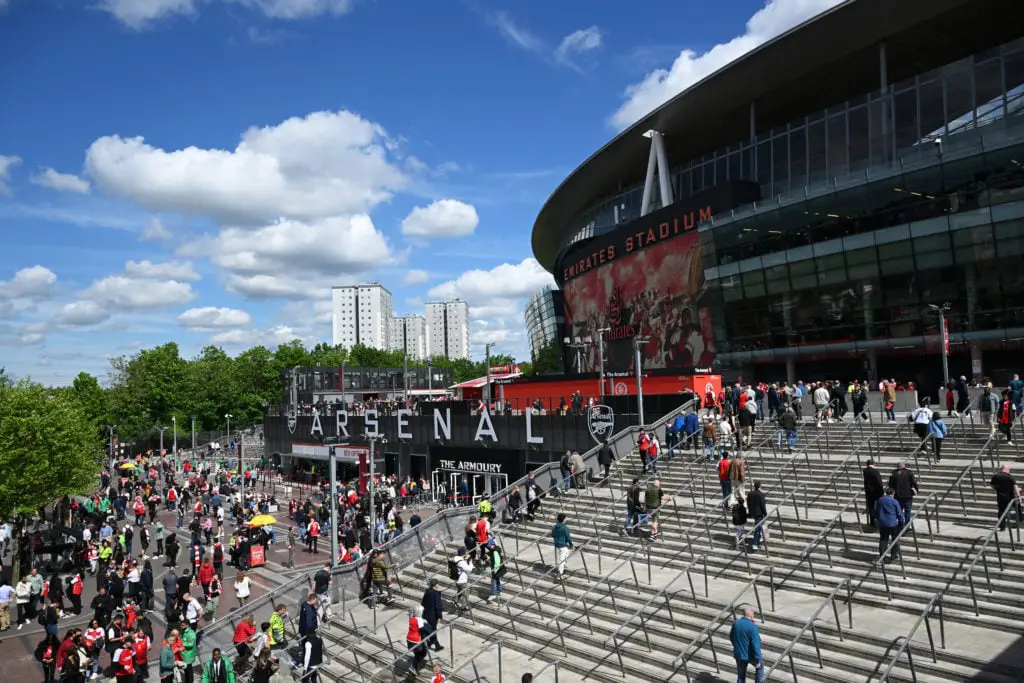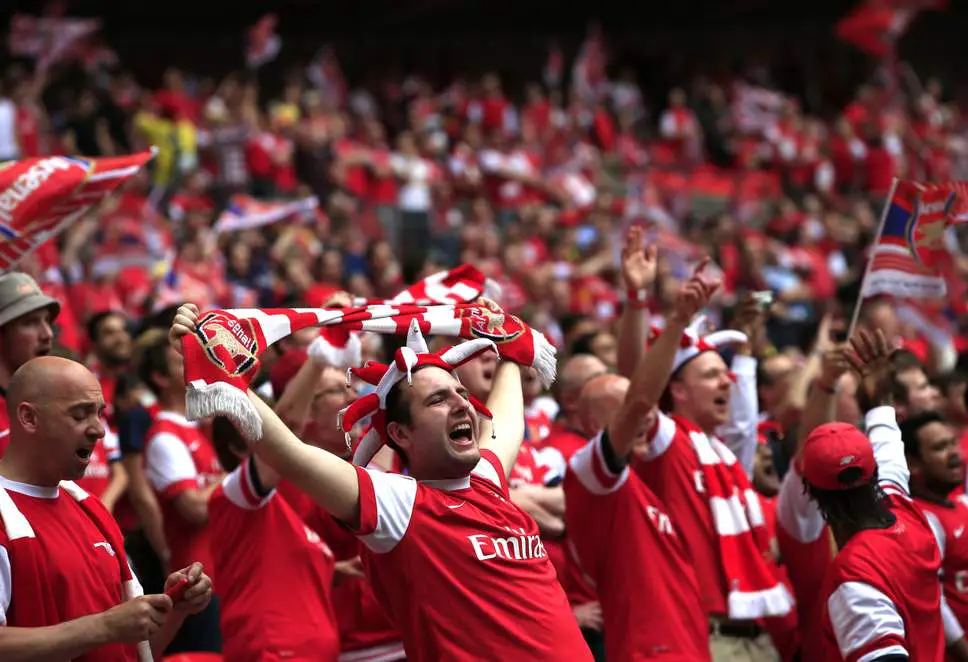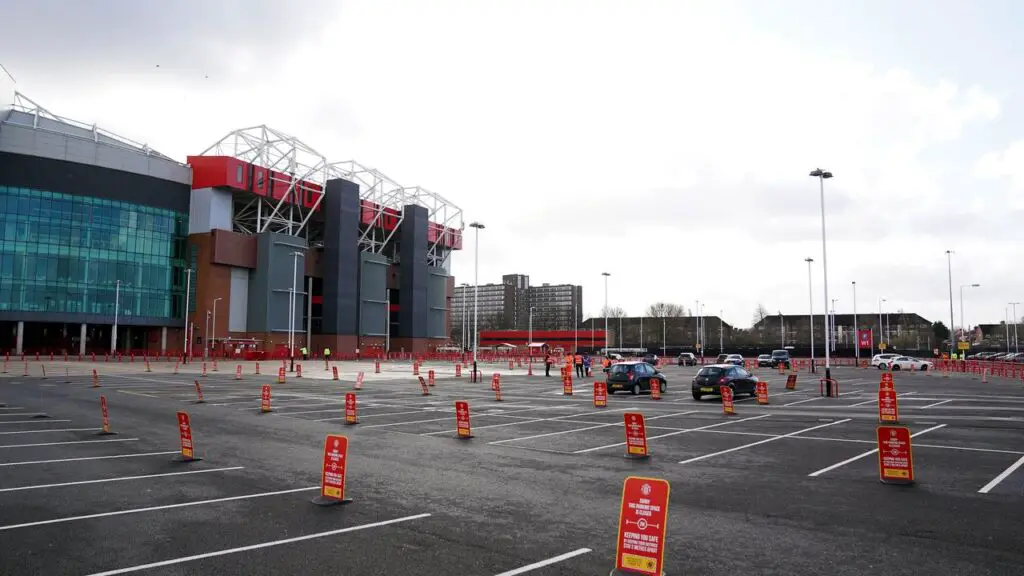According to new data from the CIES Football Observatory, Arsenal currently boast the seventh youngest squad in the Premier League this season, with an average age of 25.94 years across all league appearances as of September 29.
This statistic reflects a deliberate shift in strategy under Mikel Arteta — one that emphasizes energy, adaptability, and long-term sustainability, rather than short-term fixes or aging stars.
Young but balanced
Only six Premier League sides have fielded younger teams on average so far: Chelsea (24.36), Sunderland (25.10), Brentford (25.14), Tottenham (25.51), Manchester City (25.55), and AFC Bournemouth (25.87).
While Chelsea top the list largely because they haven’t used a single player aged 30 or older — the only team in the division to do so — Arsenal’s balance is what stands out. The North London club have given just 6.8% of their total league minutes to players aged 30 or above. That’s significantly lower than Liverpool’s 29.1% and miles below Everton’s league-high 39.7%.
This shows that Arteta’s Arsenal are no longer the youthful, inconsistent side they once were, nor an aging squad reliant on veterans. Instead, they represent a measured balance between youthful dynamism and experienced leadership.

The age of stability
Over half of Arsenal’s Premier League minutes (52.6%) have been played by players between 26 and 29 years old — the typical “peak performance” bracket in modern football. It’s the same range favored by clubs such as Fulham and Leeds, who have also invested heavily in players entering their prime years.
This cohort includes the likes of Martin Ødegaard, Gabriel Magalhães, Declan Rice, and Ben White — players who combine youthful energy with the maturity to perform consistently at the highest level.
That age profile, according to analysts, is the foundation of Arsenal’s stability. “Teams that concentrate their minutes in that 26–29 bracket usually compete for titles,” one Premier League data analyst commented. “It’s the age where players still have the physical edge but have developed the tactical awareness needed to control games.”
Emerging talent still part of the story
Despite the increasing maturity of Arsenal’s squad, young prospects continue to play an important role. Teenagers Max Dowman, Myles Lewis-Skelly, and Ethan Nwaneri have all featured regularly in matchday squads this season, contributing to the club’s long-standing tradition of integrating academy graduates.
Even so, players aged 21 or under account for just 7.9% of Arsenal’s total league minutes, placing the Gunners 10th in the Premier League for youth involvement. While that might seem low for a club known for its academy excellence, it reflects a strategic shift: Arsenal are now focused on developing young players within a strong and competitive first-team structure rather than relying solely on youth out of necessity.
A club built for now — and for the future
When it comes to the 22–25 age group, Arsenal rank sixth in the league, with 32.7% of total minutes distributed among players in that range. This perfectly complements their core of players in their mid-to-late twenties, ensuring that the team remains competitive now while already preparing for the next generation.
In practice, this means Arteta’s squad can maintain both short-term performance and long-term progression — something that few clubs manage successfully. It also allows Arsenal to handle the demands of multiple competitions without over-relying on aging players.
How Arsenal compare across the league
At the other end of the scale, Everton have fielded the oldest average lineup so far this season at 28.40 years, narrowly ahead of Aston Villa (28.35) and Fulham (27.88). These sides rely heavily on experience and established professionals — an approach that can provide short-term consistency but sometimes limits squad evolution.
In contrast, Arsenal’s current balance shows just how far the team has come since Mikel Arteta first took charge in late 2019. Back then, the Gunners’ squad was bloated with aging players on long contracts and lacked clear direction. Four years later, the numbers tell a very different story: Arsenal now sit among the most modern, efficiently structured teams in English football.
Arteta’s vision taking shape
Arteta’s project has always been built around rejuvenation — identifying young talent, nurturing it, and surrounding it with leaders who can guide them. Players such as Bukayo Saka, William Saliba, and Gabriel Martinelli represent the youthful heartbeat of the side, while experienced figures like Ødegaard, Rice, and Gabriel Jesus provide stability and tactical maturity.
That blend has allowed Arsenal to compete not only at the domestic level but also in Europe, proving that a young squad can still deliver results at the top level when managed intelligently.
A modern blueprint for success
The CIES data underscores something many fans and pundits have already noticed — Arsenal have evolved into one of the most balanced and forward-thinking clubs in the Premier League. With a roster carefully calibrated between youth and experience, the Gunners are no longer just building for tomorrow; they’re equipped to win today.
As Arteta himself often says, “You can’t build a future without being competitive in the present.” The numbers suggest Arsenal have found that equilibrium — a young, hungry team guided by leaders in their prime, setting the standard for what a modern football squad should look like.

















